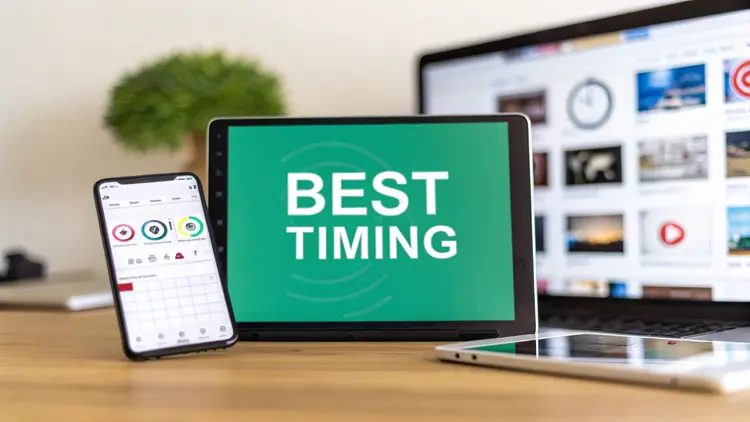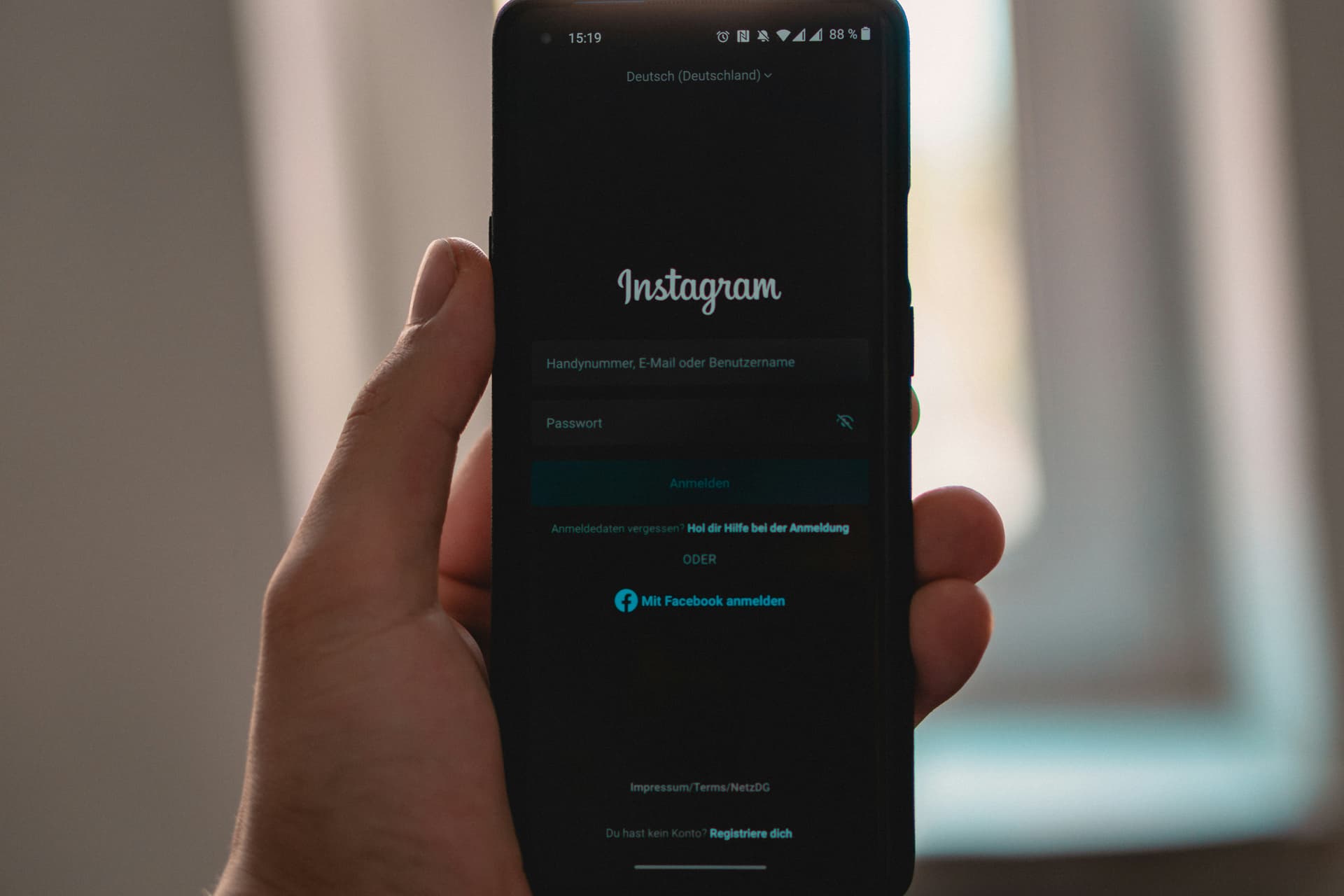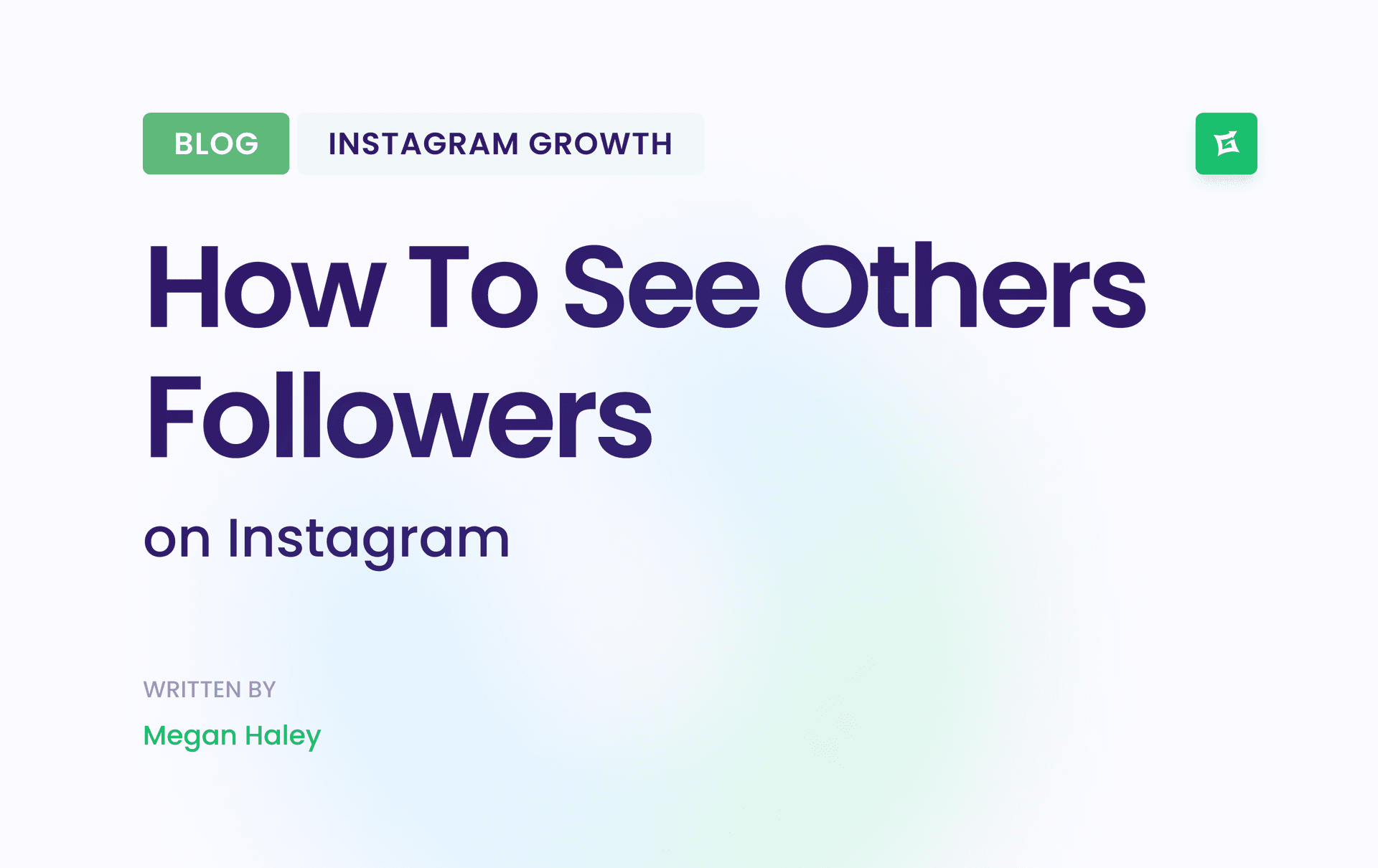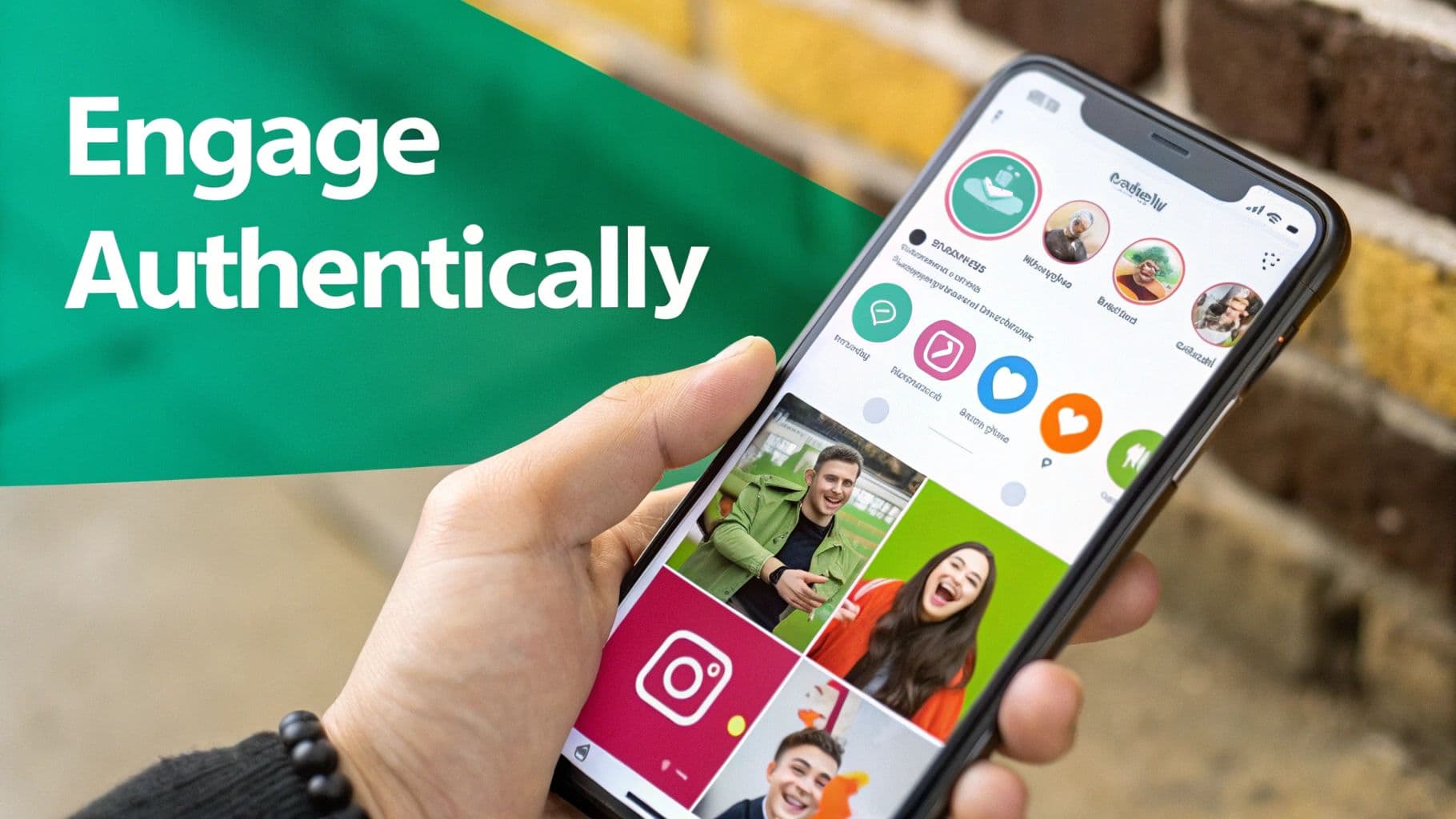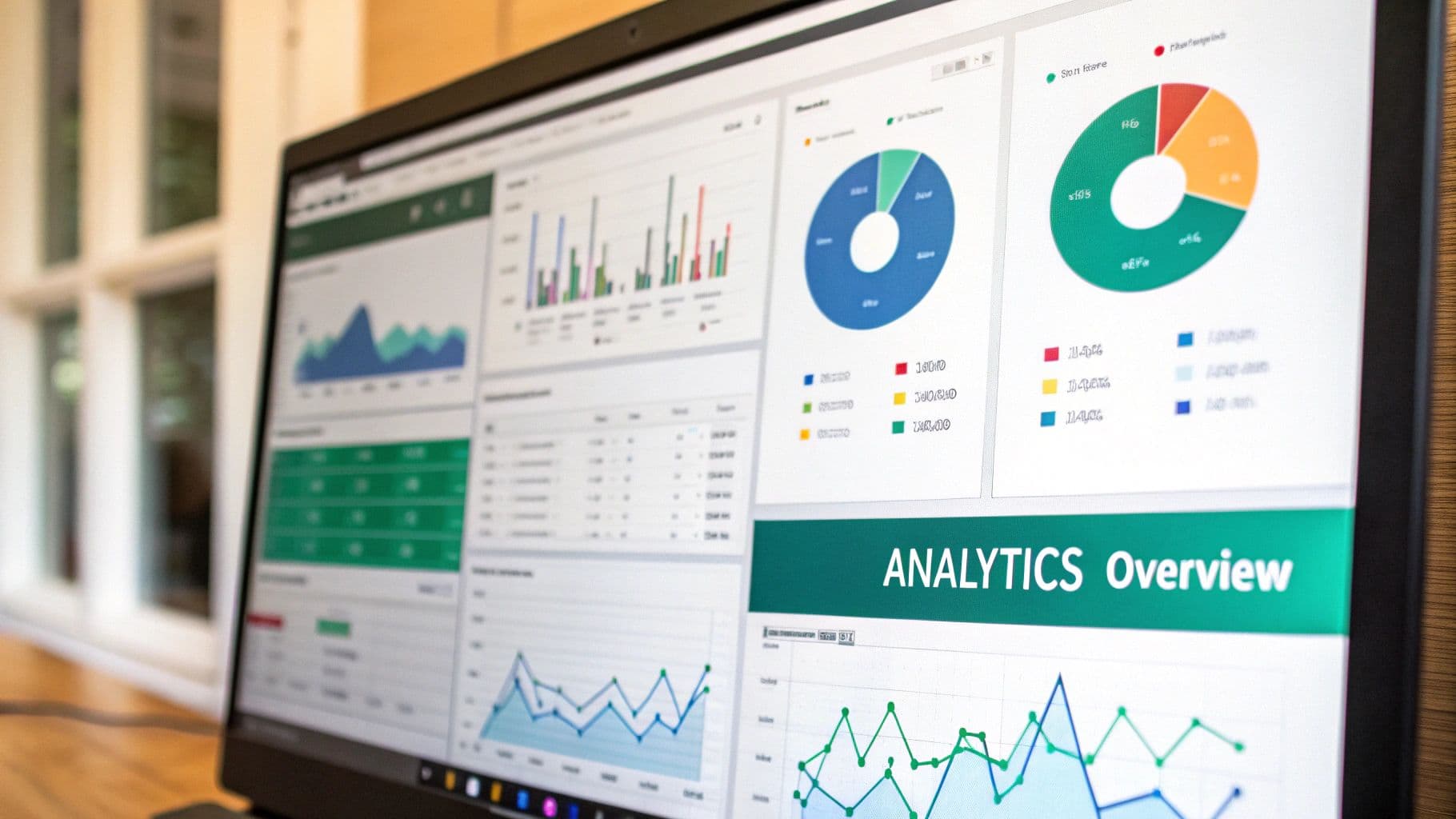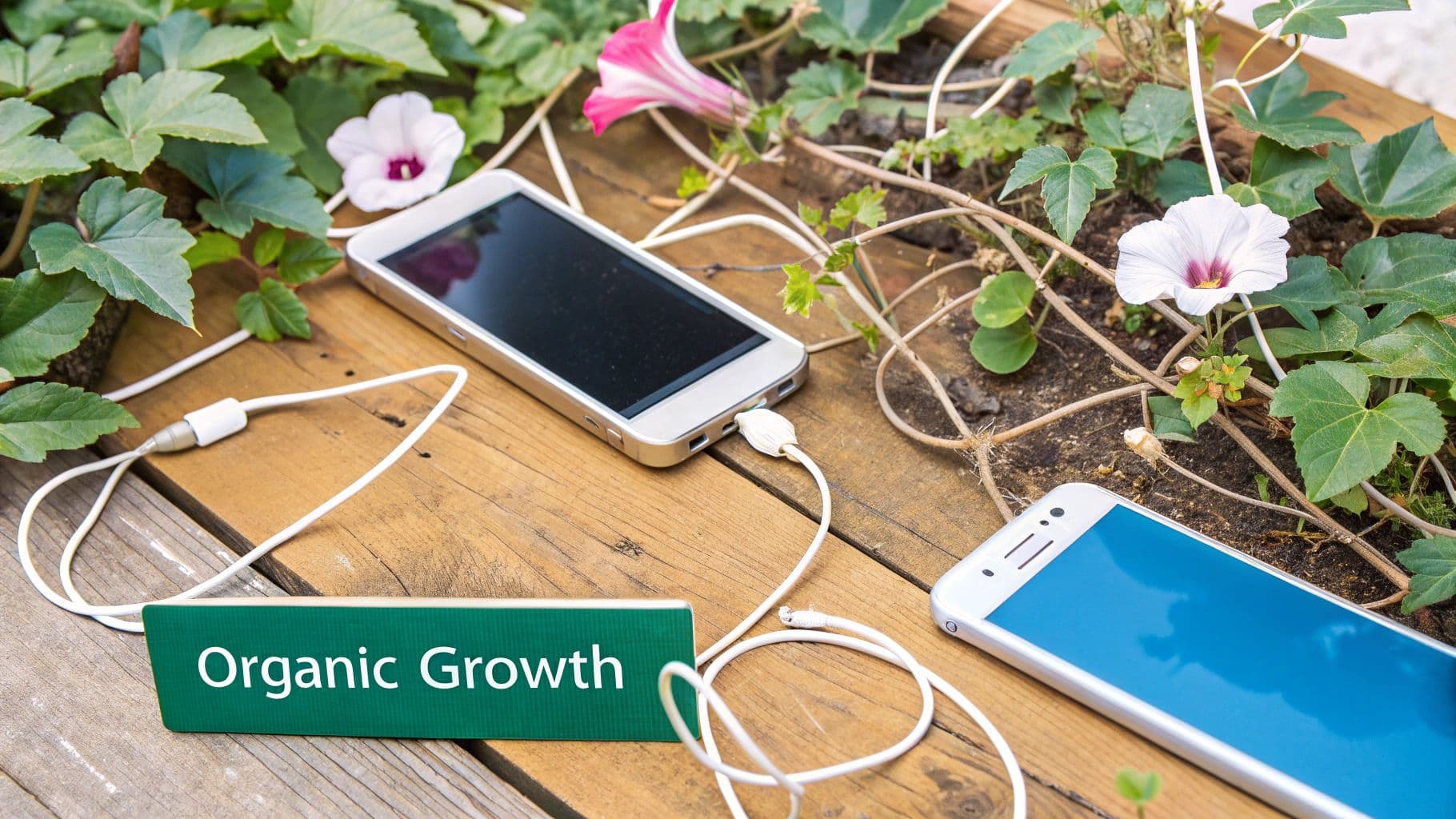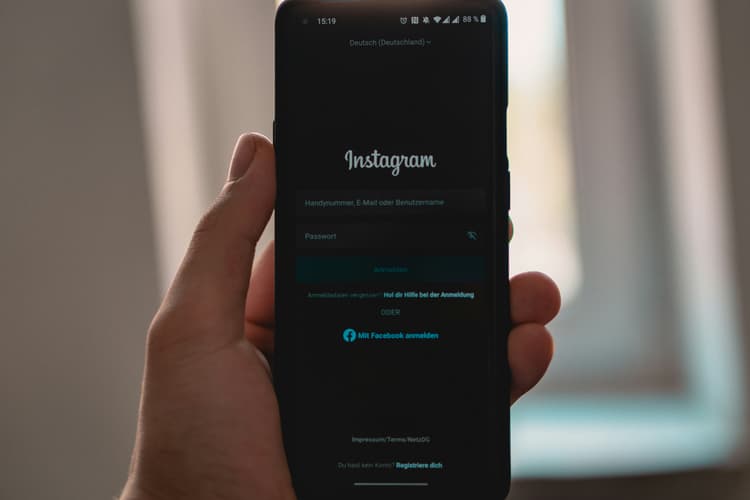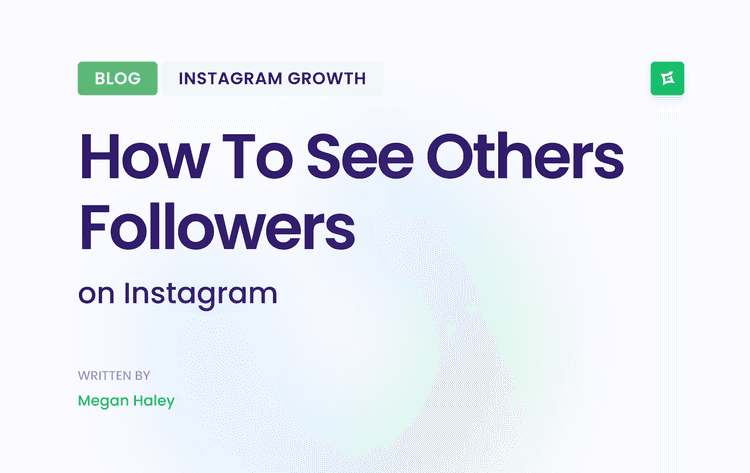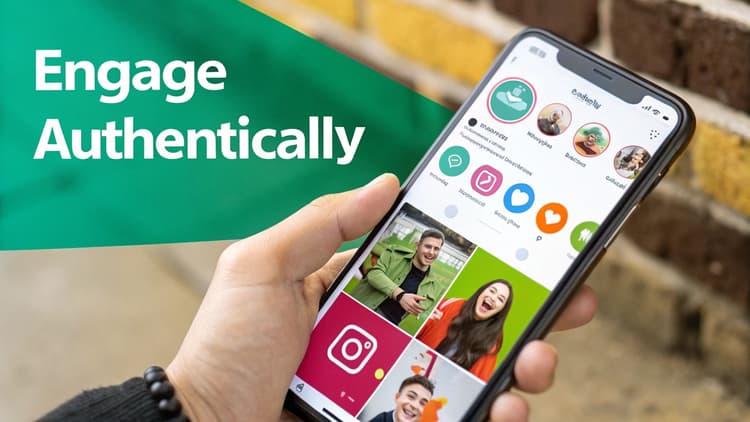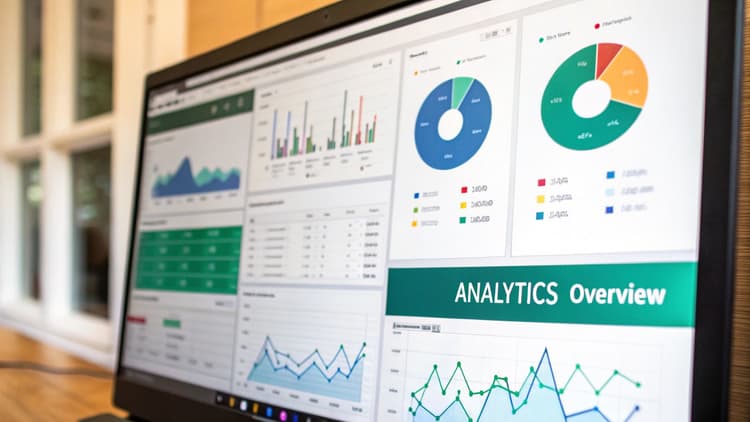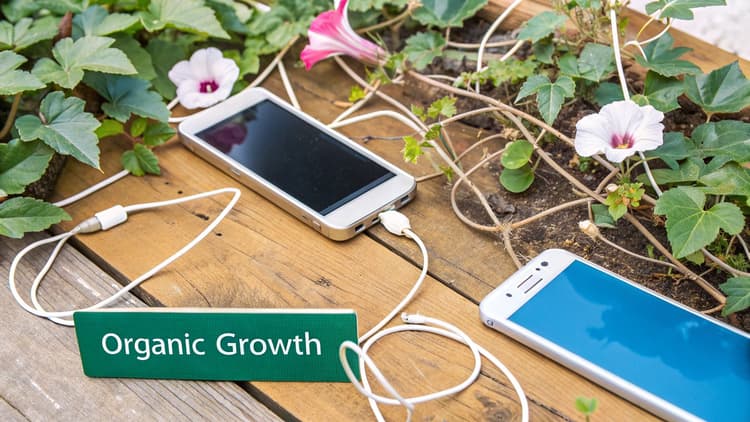Ready to Boost Your Instagram Reach?
Consistent Daily Posting
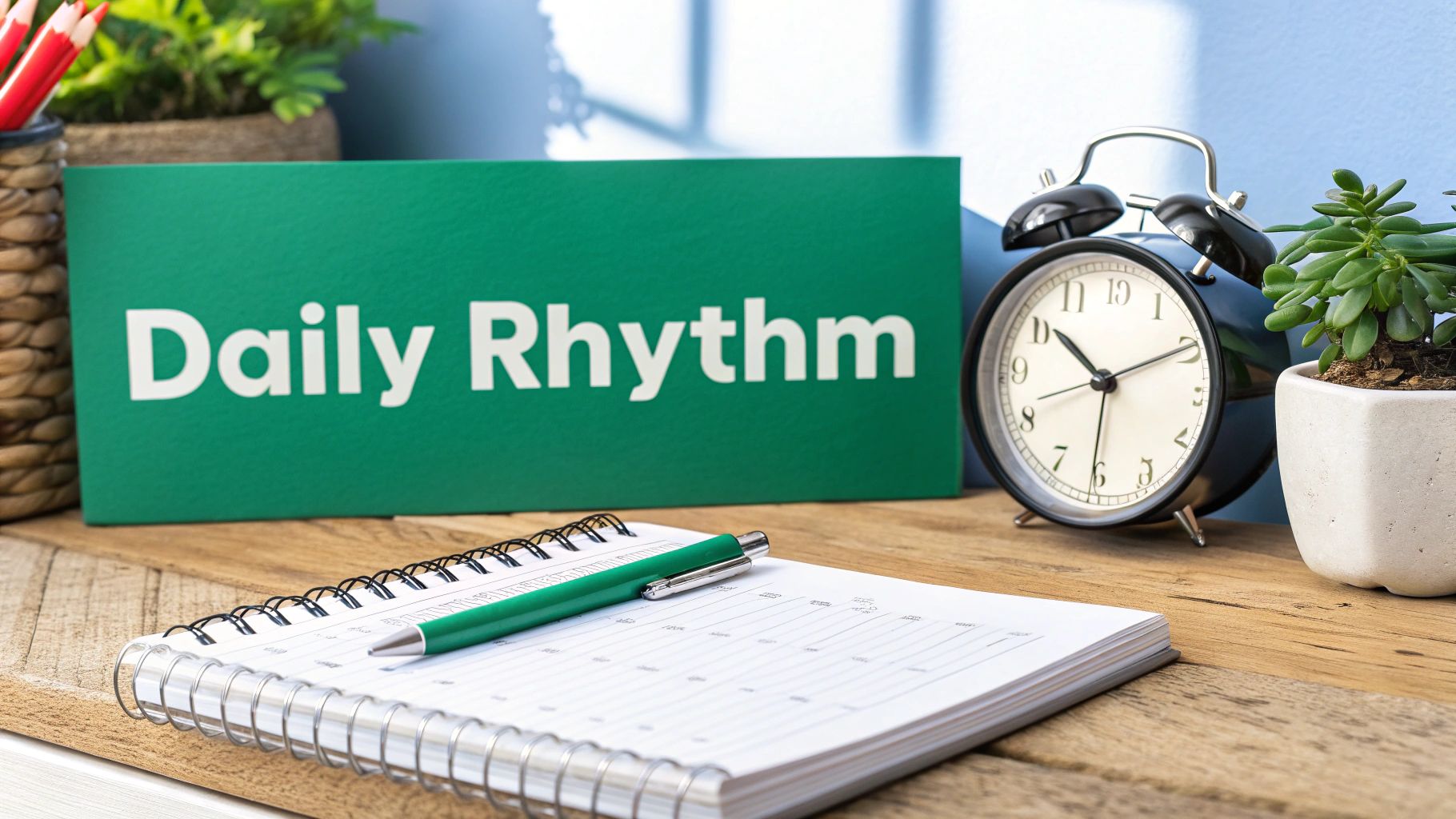
Building a solid Instagram brand requires strategy, especially if you're focused on organic growth and engagement. One foundational approach is consistent daily posting. This means sharing content once daily, ideally around the same time. This creates predictable content delivery, making your account a reliable source for your audience.
This predictability also benefits your standing with the Instagram algorithm. The algorithm tends to favor accounts that show consistent activity and user interaction. Daily posting offers a good balance between visibility and manageability, making it suitable for individuals and smaller teams.
Creating A Content Rhythm
Consistent daily posting establishes a rhythm for your content. Posting around the same time each day trains your audience to anticipate new posts. This increases the chance they’ll see your updates in their feeds. It also signals to Instagram that your account is active and engaging, potentially boosting visibility.
Features of Consistent Daily Posting
Fixed Posting Time: Aim to post at the same time daily, with a one-hour window for flexibility.
Predictable Content Rhythm: Your audience knows when to expect new content.
Prioritizes Consistency Over Frequency: Focus on quality content and showing up regularly, rather than posting multiple times a day.
Algorithm-Friendly: Consistent posting aligns with Instagram's algorithm.
Pros and Cons of Daily Posting
Here's a quick look at the advantages and disadvantages of consistent daily posting:
Pros:
Builds audience habits and expectations.
Sustainable long-term.
Establishes account reliability.
Steady engagement metrics.
Reduces creator burnout.
Cons:
May not maximize reach.
Requires planning.
Less room for spontaneity.
May not be optimal for time-sensitive industries.
Real-World Examples
Several well-known accounts effectively use consistent daily posting.
National Geographic: Known for its stunning daily nature photography, which is posted consistently.
Kayla Itsines: A fitness influencer who maintains a regular schedule of daily workout posts.
The New York Times: Provides daily news highlights, keeping their audience informed.
The Rise of Consistent Daily Posting
This strategy gained popularity thanks to figures like Gary Vaynerchuk, who emphasized the importance of consistent online visibility for building an audience and brand. The success of accounts like National Geographic and various micro-influencers further demonstrated its effectiveness in fostering engaged communities.
Tips for Implementation
Here are some practical tips for implementing consistent daily posting:
Use a Content Calendar: Plan content 1-2 weeks in advance.
Create Content Batches: Dedicate specific times to create multiple content at once.
Monitor Performance: Track your analytics to identify optimal posting times.
Prioritize Quality Over Quantity: Focus on valuable and engaging content.
Utilize Scheduling Tools: Explore tools like Creator Studio or Later to automate posting.
Peak Hours Targeting

Peak-hours targeting is a key strategy for optimizing your Instagram posting schedule. It's all about understanding your audience and posting when they're most active. This maximizes the chances of your content being seen and boosts initial engagement. Instead of posting randomly, you're strategically targeting the times your followers are already scrolling through their feeds.
How It Works
Peak-hours targeting relies on analyzing your Instagram Insights. This data shows when your followers are most active, giving you valuable information about their online behavior. Schedule your posts to go live during these high-activity periods. Keep in mind, that these peak times can vary depending on your audience demographics, the day of the week, and even the season.
Features and Benefits
Data-Driven Posting Times: No more guessing! Use concrete data from your analytics to determine the best posting times.
Concentrated Posting: Focus your posting efforts during high-engagement periods to increase visibility.
Customized to Your Audience: Tailor your schedule to your specific audience’s habits, not generic recommendations.
Optimized Over Time: Continuously analyze your engagement data to refine and perfect your schedule.
Pros and Cons of Peak-Hours Targeting
Understanding the advantages and disadvantages of this method will help you implement it effectively.
Pros:
Maximizes initial engagement.
Increased reach.
Improved feed visibility.
Cons:
Requires Instagram Insights.
Inconvenient posting times.
Fluctuating peak times.
Time zone considerations.
Real-World Examples
Fashion Brands (e.g., Zara): Often post during evening commute times.
Food Accounts: Post dinner inspiration around 4-5 pm.
B2B Brands: Focus on weekday business hours.
Evolution and Popularization
Peak-hours targeting gained traction with the rise of data-driven social media marketing. Platforms like Hootsuite and Buffer, with influencer marketing platforms like Later and Sprout Social, have promoted using Insights data for optimized posting.
Tips for Implementation
Regularly Check Insights: Review your Insights weekly, or even more often, to spot any changes in activity patterns.
Test and Refine: Experiment with different times within your peak windows.
Pre-Peak Posting: Consider posting 30 minutes before the peak to get a better position in feeds.
Time Zone Awareness: Remember different time zones for a global audience.
Weekday vs. Weekend Analysis: Analyze weekday and weekend performance separately.
By following these tips and consistently analyzing your data, peak-hours targeting can significantly improve your Instagram performance and expand your reach.
Content Batching and Theme Days

Want a more organized and engaging Instagram account? Content batching and theme days might be the answer. This strategy involves assigning specific themes or categories to different days of the week. This creates a predictable content pattern that simplifies your workflow and helps build a loyal following. Your audience knows what to expect and when fostering a sense of community around your content.
This method has gained significant traction, popularized by social media experts like Jasmine Star and Jenna Kutcher, and adopted by major brands. Think of Chipotle's #TacoTuesday or Planet Fitness's #MotivationMonday. These campaigns demonstrate how theme days can strongly link a brand with a specific day, benefiting both the creator and the audience.
Key Features and Benefits
Designated Theme Days: Assign a specific theme to each weekday.
Batch Creation: Create content in batches based on the theme, saving time and effort.
Predictable Content Patterns: Give your followers a clear idea of what to expect daily.
Balanced Content Mix: Create a diverse content calendar, avoiding topic fatigue.
Targeted Audience Segments: Reach different segments of your audience based on their specific interests throughout the week.
Pros and Cons of Themed Content
Understanding the advantages and disadvantages of these days is crucial for successful implementation.
Pros:
Streamlines content planning and creation.
Provides predictable content for followers.
Facilitates efficient batch content creation.
Ensures a balanced content mix.
Enables targeted audience segment engagement.
Cons:
Reduces flexibility for timely or trending content.
Risks becoming repetitive if not executed creatively.
Limits spontaneous content opportunities.
Requires consistent commitment to the schedule.
Real-World Examples and Implementation Tips
Examples of these days in action include:
Fitness accounts: #MotivationMonday, #WorkoutWednesday, #FlexFriday.
Food bloggers: #MeatlessMonday, #TacoTuesday, #SweetSaturday.
Fashion brands: #NewArrivalsMonday, #StyleTipThursday, #WeekendOutfitFriday.
Here are some tips for implementing content batching and theme days:
Plan: Create 2-4 weeks of themed content in advance during a dedicated planning session.
Utilize Collections: Organize your content by theme using Instagram's Collections feature.
Start Small: Begin with 3 theme days a week to ease the process.
Monitor Engagement: Track which themes resonate most with your audience and adjust accordingly.
Incorporate Hashtags: Use relevant and trending hashtags to expand your reach. Need inspiration? Check out these Caption Ideas for Instagram.
By implementing content batching and theme days effectively, you can shift from reactive posting to a proactive and engaging strategy. This approach earns its place as a best practice for Instagram scheduling by enabling creators to work smarter, not harder while providing consistent value to their followers. For more Instagram tips, check out [Tips for Creating Engaging Instagram Reels]
The 3-2-2 Weekly Instagram Strategy
The 3-2-2 strategy offers a balanced approach to Instagram content creation. It's ideal for busy individuals and businesses wanting consistent engagement without daily posting. This framework involves 3 feed posts, 2 Reels, and 2 Stories per week. This distributes content across different formats, maximizing reach and catering to different viewing habits.
This approach recognizes the importance of diverse content. Static image posts in your feed build a polished brand. Reels cater to the platform's focus on short-form video, offering discoverability and viral potential. Stories provide a channel for informal, real-time updates and engagement, fostering stronger follower connections.
Features and Benefits
Structured Content Mix: A clear framework for weekly content, spanning various formats.
Algorithm Alignment: Prioritizing Reels aligns with Instagram's algorithm, boosting visibility.
Balanced Approach: Maintains a consistent brand without overwhelming your audience.
Diverse Audience Engagement: Caters to casual feed browsers and engaged Story viewers.
Strategic Timing: Allows for scheduling content types for maximum impact.
Pros
Aligning with Instagram's algorithm, favoring Reels.
Creates content diversity, maintaining audience interest.
Manageable workload compared to daily posting.
Allows for strategic content timing.
Combines evergreen feed content with timely Stories.
Cons
Requires consistent content creation, challenging for solo creators.
Demands proficiency in various content formats.
It is less effective if your audience prefers one content type.
May need adjustments as Instagram's algorithm changes.
Real-World Examples
Beauty Brands: Product photos in the feed, makeup tutorial Reels, and behind-the-scenes Stories.
Travel Influencers: Destination photos in the feed, immersive travel Reels, and daily location Stories.
Small Businesses: Product showcases in the feed, product demo Reels, and customer testimonial Stories.
Origins and Growth
The 3-2-2 strategy gained popularity through Instagram marketing experts like Sue B. Zimmerman, along with research from platforms like Later.com and Socialinsider. Their findings on posting frequency and the importance of video content, especially Reels, solidified the strategy's effectiveness.
Practical Implementation Tips
Strategic Scheduling: Schedule feed posts for peak engagement times.
Reel Timing: Post Reels on Tuesdays and Thursdays for potentially lower competition.
Story Strategy: Use Stories for time-sensitive content, polls, Q&As, and interactive elements.
Content Repurposing: Repurpose content. Turn feed posts into Story content or create Reel teasers.
Performance Tracking: Track performance by content type to refine your mix and understand audience preferences.
The 3-2-2 strategy offers a practical and effective approach to Instagram scheduling, especially for leveraging the algorithm without daily posting. Its balanced approach and diverse content formats cater to a wider audience, contributing to stronger engagement and growth.
Cross-Platform Synced Scheduling
Cross-platform synced scheduling improves your Instagram strategy. It renews it from a standalone effort into a key part of a larger marketing ecosystem. Instead of isolating Instagram, this method synchronizes posting with your other social media channels, email lists, and website. This creates a unified brand experience and maximizes content impact. It's essential for growing an audience and building a strong brand.
This strategy is built around the idea of a "content journey." Imagine a follower finds your brand on YouTube. Later, they see related content on Instagram. Finally, they receive an email reinforcing the message. This orchestrated sequence creates multiple touchpoints, deepening engagement. For example, a fashion brand could preview a new collection on Instagram, and then link to their website where customers can purchase items. This coordinated approach boosts conversions.
Features of Cross-Platform Synced Scheduling
Coordinates Instagram Posts With Other Platform Activities: This is the core–timing Instagram content with other channels.
Creates Multi-Platform Content Journeys: Guide your audience through interconnected content across platforms.
Reinforces Messaging Across Channels: Strategically timed posts amplify your message.
Drives Traffic Between Platforms: Each platform promotes the others, expanding reach.
Pros
Maximizes Campaign Impact: Amplifies reach for launches and announcements.
Provides Multiple Touchpoints: Reinforces key messages across different channels.
Drives Cross-Platform Growth: Encourages followers across platforms.
Creates a Cohesive Brand Experience: Builds a consistent brand identity.
Extends Content Lifespan: Content is repurposed and shared across multiple channels.
Cons
Requires Coordination: Demands careful planning and execution.
May Not Align With Optimal Posting Times: Balancing cross-platform timing can be a challenge.
Potential for Content Fatigue: Overly repetitive messaging can deter followers.
Challenging to Manage Without Dedicated Resources: Can be complex to implement without the right tools or team.
Examples
Fashion brands syncing Instagram posts with email newsletters.
YouTubers use Instagram teasers before video uploads.
Podcast hosts sharing Instagram quotes with new episode releases.
This integrated approach is supported by digital marketing experts like Amy Porterfield, who emphasizes a cohesive customer journey. Gary Vaynerchuk's content repurposing strategy aligns with this, maximizing content reach across platforms. Even companies like Netflix and HBO use Instagram to promote new releases.
Tips for Implementation
Master Content Calendar: Plan content across all platforms.
Tailor Content: Adapt content to each platform's format and audience.
Strategic Timing: Schedule Instagram posts around major content releases on other platforms.
Clear CTAs: Include calls to action directing followers to other channels.
Utilize Instagram Stories: Highlight content on other platforms for quick access.
Managing multiple platforms can be complex. Gainsty offers best practices for managing social media for numerous clients. This can be particularly helpful for marketing agencies. Learning effective content repurposing strategies is also key. Mastering cross-platform synced scheduling rebuilds your Instagram followers into a powerful element of your integrated marketing strategy.
Algorithmic Pattern Adaptation: Riding the Waves of Instagram's Algorithm
Staying ahead on Instagram isn't about sticking to a rigid schedule. It's about adapting. Algorithmic Pattern Adaptation is a sophisticated approach to Instagram scheduling that prioritizes flexibility and responsiveness to the ever-changing Instagram algorithm. What worked yesterday might not work today, and that's okay. This strategy offers the greatest potential for maximizing reach and engagement in today's dynamic social media environment.
What Is Algorithmic Pattern Adaptation?
It's about constantly monitoring, testing, and adapting your posting schedule to capitalize on the latest algorithm trends. This involves analyzing performance data – likes, comments, shares, reach, and saves – to identify emerging patterns and adjust your strategy accordingly. It's about prioritizing current engagement over historical data and embracing change.
Key Features of Algorithmic Pattern Adaptation
Continuous Testing and Adaptation: Regularly experiment with posting times, frequency, and content formats.
Data-Driven Decisions: Base scheduling choices on performance metrics, not guesswork.
Flexibility Over Rigidity: Be prepared to quickly change your posting schedule based on observed trends and algorithm updates.
Prioritizing Current Engagement: Focus on what's working now.
Pros of Algorithmic Pattern Adaptation
Stay Ahead of the Curve: Capitalize on new algorithm preferences before your competitors.
Identify Emerging Opportunities: Discover trending content formats or posting times.
Optimized for Current Conditions: Ensure your strategy aligns with the latest algorithm changes.
Higher Growth Potential: Maximize reach and engagement.
Cons of Algorithmic Pattern Adaptation
Resource Intensive: Requires constant monitoring, analysis, and adjustment.
Requires Data Skills: You need to interpret data and make informed decisions.
Less Predictable: Content planning becomes more challenging.
Potential for Inconsistent Audience Experience: Rapid changes might confuse some followers.
Real-World Examples of Algorithmic Pattern Adaptation
Creators who shifted to daily Reels when Instagram prioritized short-form video saw significant growth.
Accounts that thrived on frequent posting during the chronological feed era had to reduce their frequency when the algorithm shifted.
News accounts leverage real-time engagement data to optimize posting times for maximum reach.
Tips for Implementing Algorithmic Pattern Adaptation
Monitor Weekly Engagement: Track key metrics and look for trends.
Run Short Experiments: Test different posting patterns on a two-week cycle.
Stay Informed: Join Instagram marketing communities for algorithm updates.
A/B Test: Post similar content at different times to find optimal posting windows.
Create Flexible Content: Avoid overly time-sensitive material.
Who Popularized Algorithmic Pattern Adaptation?
This approach has been championed by figures like Instagram marketing expert Jenn Herman, social media analytics companies like Iconosquare, and various growth hacking communities. They emphasize data-driven decisions and agility in a changing environment.
Algorithmic Pattern Adaptation isn't for everyone. It requires time, effort, and analytical skills. However, for those willing to embrace the challenge, the potential rewards – increased reach, higher engagement, and sustained growth – are substantial.
Engagement-Based Timing Strategy
Forget posting just when your audience is online. The Engagement-Based Timing Strategy focuses on when they’re most likely to engage – liking, commenting, saving, and sharing your content. This strategy prioritizes the quality of interactions over the sheer quantity of impressions, leveraging Instagram’s algorithm rewards meaningful engagement with increased reach. This makes it a crucial part of any effective Instagram posting schedule.
Instead of basic follower activity times, this strategy analyzes when your followers actively comment and save your posts. It differentiates between passive scrolling and active participation, optimizing your schedule for maximum impact. This could mean posting less frequently but with much greater strategic intent. For example, instead of three scattered posts, you might post only once, precisely when your audience is primed to engage.
Features and Benefits
Distinguish Between Passive Viewing and Active Engagement Times: Focuses on when followers are actively interacting.
Prioritizes Quality Over Quantity: Aims for meaningful engagement, not just views.
Uses Comment and Save Data: Leverages more insightful data for scheduling.
May Result in Fewer, More Strategic Posts: Emphasizes impact over frequency.
Higher Engagement Rates Per Post: Targeted posting leads to more interaction.
Increased Reach: Instagram rewards high engagement with more visibility.
Stronger Community Building: Active interaction fosters a sense of belonging.
Potential for Reduced Posting Frequency: Strategic timing achieves more with less.
Triggers the Instagram Algorithm: High engagement leads to greater reach, potentially leading to even more engagement.
Real-World Examples
A beauty influencer posts makeup tutorials in the evenings when followers have time to watch and try the looks.
A business coach posts leadership content during morning commutes when professionals engage with industry news.
A food account posts dinner ideas at 4 pm when people are thinking of what to eat.
Evolution and Popularization
This strategy gained traction as social media strategists and analytics companies like Alex Tooby and Elise Darma emphasized engagement over impressions. As Instagram’s algorithm evolved, the Engagement-Based Timing Strategy became crucial for organic growth.
Pros and Cons
Pros: Higher engagement rates, increased reach, stronger community building, and potentially reduced posting frequency.
Cons: Requires detailed analytics, engagement patterns vary by content, less predictable schedule, and difficulty distinguishing correlation from causation.
Tips for Implementation
Track Engagement Metrics: Use Instagram Insights and other analytics tools.
Ask Engaging Questions: Encourage interaction in your captions.
Respond to Comments Promptly: Show your audience you value their input.
Consider Day of Week Patterns: Weekday engagement differs from weekend engagement.
Be Present After Posting: Engage in real-time conversations.
You might be interested in How To Increase Instagram Engagement. A well-crafted hashtag strategy can also boost your reach. Read also: How to Use Hashtags on Instagram. Combine hashtags with the Engagement-Based Timing Strategy to maximize organic growth.
Counter-Programming: A Strategic Approach to Instagram Posting

The counter-programming schedule offers a strategic advantage on Instagram. Instead of competing during peak posting times, this method focuses on when your target audience is online but content from other creators is less prevalent. This allows your posts to stand out, potentially boosting engagement and visibility. It's a powerful alternative to conventional posting strategies, offering a unique path to organic growth.
How Counter-Programming Works
Counter-programming involves avoiding typical peak posting hours. This might mean posting in the early mornings, late nights, or even during workday lunch breaks. The best times depend heavily on your niche and target audience. For example, a fitness account might find success posting at 5-6 am when early risers are active, while a food blogger might see better engagement posting recipes around 10-11 pm. B2B accounts might connect with their audience during lunch breaks.
Benefits of Counter-Programming
Reduced Competition: Fewer posts during off-peak hours mean less competition for your followers' attention.
Targeted Engagement: Focusing on when your specific audience is active maximizes your content’s impact.
Time Slot Ownership: Consistent posting during off-peak times can establish your Instagram account as the "go-to" account for those hours.
Increased Engagement Rates: Less competition means a higher likelihood of likes, comments, and shares.
Standing Out in Crowded Niches: Counter-programming provides a way to differentiate your content.
Weighing the Pros and Cons
Pros:
It brings about less competition in followers' feeds.
Potential to own specific time slots.
Reaching followers who browse during unusual hours.
Potentially higher engagement rates.
Differentiation in competitive niches.
Cons:
Possibly lower overall reach compared to peak hours.
Requires experimentation to find optimal posting times.
It may miss casual browsers who primarily check Instagram during peak times.
Difficulty in identifying truly under-utilized time slots.
Examples and Evolution of Counter-Programming
Digital marketing strategists like Neil Patel and within growth hacking communities have popularized counter-programming. Social media thought leaders like Mark Schaefer have also championed this approach, emphasizing standing out from the crowd. Initially experimental, data-driven insights and analytics now allow for more precise identification of niche engagement windows, making counter-programming a more viable strategy.
Tips for Implementing Counter-Programming
Experiment: Test posting 1-2 hours before or after typical peak times.
Understand Your Audience: Consider their lifestyle and daily routines.
Analyze Competitors: Look for gaps and under-utilized time slots in their posting schedules.
Gradual Integration: Start with 2-3 counter-programming posts per week alongside some peak-time posts.
Time Zone Considerations: Adjust your schedule for international audiences.
By strategically using counter-programming, you can create a unique space for your brand on Instagram and potentially achieve higher engagement. This requires careful analysis, testing, and a deep understanding of your audience. However, the potential rewards make it a worthwhile strategy for maximizing organic reach and growing your brand on the platform.
8-Strategy Instagram Posting Schedule Comparison
Here’s the Instagram Posting Schedule Comparison turned into sentences based on the table:
Strategies and Their Advantages
Consistent Daily Posting has a low to medium complexity and requires a basic content calendar and scheduling tools. It results in steady, predictable engagement, making it ideal for brands and influencers seeking reliability. Its main advantage is that it builds audience habits and reduces creator burnout.
Peak-hours targeting has a medium complexity with a data-driven focus and requires Instagram Insights and analytics tools. It maximizes initial engagement, making it suitable for businesses with a clear understanding of audience activity peaks. The main benefit is that it increases reach by aligning with audience online peaks.
Content Batching and Theme Days have a low to medium complexity and rely on batch creation tools and pre-planned themes. It ensures a consistent, balanced content mix and is ideal for creators who prefer predictable, themed outputs. Its key advantage is that it streamlines planning and enhances content consistency.
The 3-2-2 Weekly Strategy is a medium-complexity approach that involves structured scheduling and diverse content formats, such as photos, videos, and stories. It results in varied engagement across multiple formats and is well-suited for brands seeking a balance of feed, video, and story content. The advantage of this strategy is that it leverages algorithm preferences while managing workload.
Cross-platform synced scheduling is a high-complexity strategy requiring a master content calendar and cross-platform scheduling tools. It supports integrated campaigns for cross-channel growth, making it ideal for companies active on multiple platforms. The advantage is that it reinforces messaging and extends content lifespan across channels.
Algorithmic Pattern Adaptation is a high-complexity strategy that requires advanced analytics tools and real-time performance monitoring. It optimizes engagement by allowing agile adjustments, making it ideal for marketers in dynamic environments. The main benefit is that it helps brands stay ahead of trends by rapidly adapting to algorithm changes.
Engagement-Based Timing Strategy has a medium complexity and requires in-depth data analysis. It enhances engagement quality and provides an algorithm boost, making it suitable for creators focused on stimulating community discussions. Its key advantage is that it targets high-interaction periods for maximized algorithm rewards.
Counter-Programming Schedule has a medium complexity and follows an experimental design approach. It relies on insights into competitor schedules and niche audience behavior to maximize engagement during off-peak hours. This strategy is useful for niche brands aiming to stand out. The main advantage is that it reduces competition, attracting standout audience attention.
Would you like any refinements or further breakdowns?
Finding Your Ideal Instagram Posting Rhythm
Discovering the perfect Instagram posting schedule isn't about adhering to a strict timetable. It's about grasping the fundamental principles and adapting them to your specific audience. We've explored various methods, from regular daily posting and focusing on peak hours to more sophisticated tactics like the 3-2-2 method, synchronizing across platforms, and even counter-programming. Remember that each of these – content batching, themed days, adapting to algorithmic patterns, and timing posts based on engagement – offers unique advantages depending on your content calendar and audience behavior.
To put these strategies into practice, begin by experimenting. Select a strategy that aligns with your available resources and objectives. You might start with consistent daily posting to establish a routine and then gradually incorporate peak-hour posting based on your audience's activity. Alternatively, you could explore content batching and themed days to streamline content creation.
Analyzing and Adapting Your Approach
Analyzing your results is crucial. Monitor your post performance – reach, engagement, and follower growth – to understand what resonates with your audience. Don't hesitate to modify and adjust your schedule based on the data. A successful strategy this week might require adjustments the following week. Instagram's algorithm and user behavior are in constant flux, so continuous learning and adaptation are essential for success.
Looking Ahead at Social Media Trends
Looking forward, expect continued evolution in the social media environment. Trends like short-form video content, live streams, and interactive features will continue to influence how users interact with platforms like Instagram. Staying informed about these changes will allow you to proactively modify your posting strategy and maintain a competitive advantage.
Key Takeaways for Instagram Success
Consistency Matters: Regular posting keeps your audience engaged and indicates relevance to the algorithm.
Understanding Your Audience: Knowing your audience's online behavior is critical for optimizing your posting schedule.
Data-Driven Optimization: Analyze your post performance to guide adjustments and refinements.
Embrace Change: The social media landscape is dynamic; continuous learning and adaptation are key.
Level Up Your Instagram Strategy with Gainsty
Ready to scale up your Instagram strategy and achieve significant organic growth? Gainsty, the AI-powered social assistant, can help you maximize your Instagram followers. We utilize AI and expert insights to provide customized growth strategies, ensuring genuine engagement and risk-free growth without resorting to bots or fake followers. From influencers to established brands, Gainsty offers comprehensive targeting, analytics, and dedicated account management, promising substantial increases in followers and engagement in a short timeframe. Stop guessing and start growing. Visit Gainsty today and unlock the potential of organic Instagram growth.
